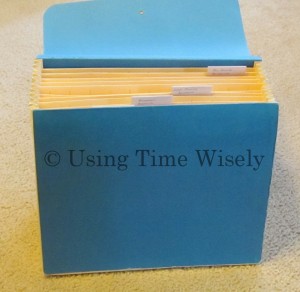When building a house, one begins by designing the framework. If you begin choosing tables and bedroom furniture, you might end up with too much space or not enough.
Starting with the framework and layout determines how you decorate. With retirement savings, one needs to begin with the framework – the plans.
In organizing our important documents, we are concentrating on our retirement plan documents held within File Box 3.
Last week, I provided an overview of the retirement category, and today, we start by defining the types of accounts.
Defining Retirement Account Types
Though there are numerous types of retirement accounts, the four major types are employer-sponsored, self-employment, individual, and annuities.
Employer-sponsored Plans
401(a) Account
Coming from the section of the tax code regulating these plans, the 401(a) is a qualified governmental plan. If you work for local, state, or federal government, you probably have this option. These plans provide an account into which both the employee and the employer contribute or the employer solely contributes.
The retirement income is based on the account balance accumulated throughout the years of the retiree’s employment at the time of retirement. Any distributions, investment gains, or investment losses will affect this balance. The account balance is a combination of the contributions, performance of the investment funds selected, and fees and expenses from the investment options offered through the employer’s investment providers.
These plans accrue tax-free. Taxes are owed only when the funds are dispersed from the account.
401(k) Account
The 401(k) plans are usually offered through payroll deduction from your employer. With contributions excluded from your reported income, these amounts are usually free from federal and state income taxes. You will not pay taxes until you withdraw the money.
A benefit to this plan is if your employer matches your contribution. If your company matches 6% of your contribution, then you will want to contribute at least 6% (if you can afford it) to get the full matching benefit.
If you cannot contribute the maximum matching percentage, then aim to do so. This is extra savings in your account.
403(b) Account
These 403(b) plans are for nonprofit organizations. They carry the same benefits as the 401(k), but have slightly different regulations for setting up. The tax code section is different which is why this is a separate type of account.
Self-employment Plans
SEP-IRAs
This type of retirement plan is a Simplified Employee Pension Individual Retirement Account. If you are self-employed, then this type of account is an option for your retirement savings. Consider doing some research on the benefits.
Keogh Plan
Though more paperwork than a SEP-IRA, the Keogh plan allows one to put aside a large percentage of the self-employed income. These types of accounts are a bit complicated with filings and four different types. If you are interested, please research and find a great resource to help you set it up and administer correctly.
Individual Retirement Accounts
Traditional IRA
A traditional individual retirement account allows one to deposit money into this account tax-free. Since you are making the deposit on after-tax dollars, you claim these contributions on your tax return which lowers your income for the year.
Your money accrues tax-free until you make a withdrawal. When you make a withdrawal, you will claim that money on your tax return and claim the appropriate amount of tax.
One downside of a traditional IRA is the requirement to begin making withdrawals at the age of 59 ½ .
ROTH IRA
The ROTH IRA is another type of individual retirement account. Unlike the Traditional IRA, one pays taxes on the money before investing.
The benefit is that at the time of withdrawal, no tax is owed. The money still accrues within the account, but you are not required to withdrawal the money at any specific age. You can just let it build until you need it, even if you wait until age 75.
Annuities
With contracts backed by insurance companies, annuities are not tax-deductible. This type of investment makes sense for those who reached the limit on employer-sponsored and self-employment plans, made the maximum contributions to an IRA, and willing to leave the money compounding for at least 15 years.
With so many types of retirement plans, these four are basic ones. There are many different forms these types take, but just understanding the types gives you a framework for deciding on the best options for your family. If this was too much information, just concentrate on the employer-sponsored and IRA options. These are the typical accounts one would carry.
Weekly Project: Determine which types of retirement plans you carry.
In using time wisely to get your important documents organized, keep gathering your retirement documents. Next week, we will continue looking at how to allocate your money within your desired plan. Keep learning!
Question: How many types of retirement accounts do you have?




